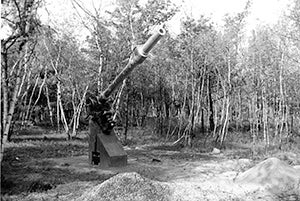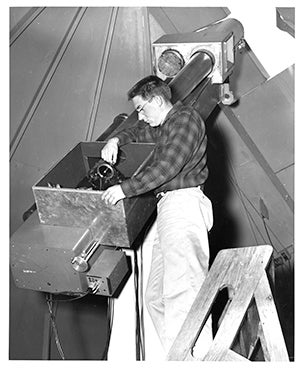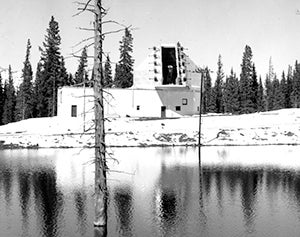The Coronagraph
Bernard Lyot, an astronomer at the French Pic du Midi Observatory, perfected the coronagraph in the early 1930s. Before Lyot’s coronagraph, scientists had to wait for a total solar eclipse to occur in order to observe the sun’s corona. The coronagraph designed by Lyot created an artificial solar eclipse by placing a “moon,” or occulting disk, in front of the telescope’s objective. The occulting disk, when combined with a complex optical system, formed an artificial eclipse that enabled observers to study and photograph the corona, the sun’s luminous outer atmosphere. Lyot's coronagraph revolutionized solar studies.
Donald Menzel corresponded with Pic du Midi in the late 1930s to learn more about Lyot’s technique, and with then-graduate student Walter Orr Roberts, built the first coronagraph in the U.S. at the Harvard College Observatory's Oak Ridge site near Cambridge.
The original Climax coronagraph was a 10cm instrument built at Harvard and brought to Climax by Walter Orr Roberts in his Graham-Paige automobile.


